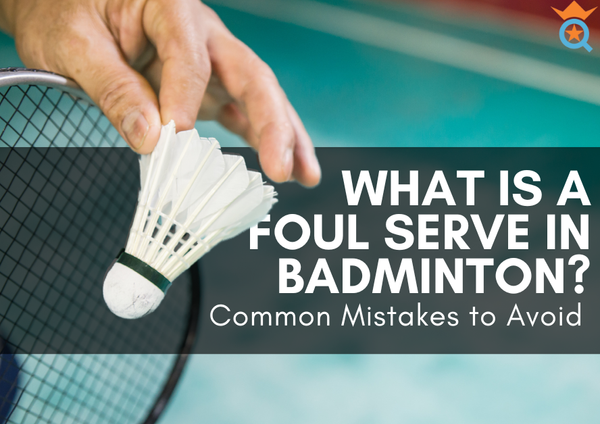Imagine standing on the golf course, facing a seemingly impossible shot, when you suddenly unleash the flop shot's power. This game-changing skill elevates your short game and leaves your opponents in awe. This high-arcing, soft-landing shot is a true testament to the mastery of golf and an indispensable tool for those who dare to strive for greatness on the green.
However, achieving the perfect flop shot is no small feat. It requires unwavering focus, dedication to technique, and the courage to embrace the challenge head-on.
In this guide, we'll unlock the secrets of the flop shot and provide you with the knowledge and expertise to conquer the course, one stroke at a time. So gear up, my friends, as we embark on a journey to unleash your inner golfing greatness.
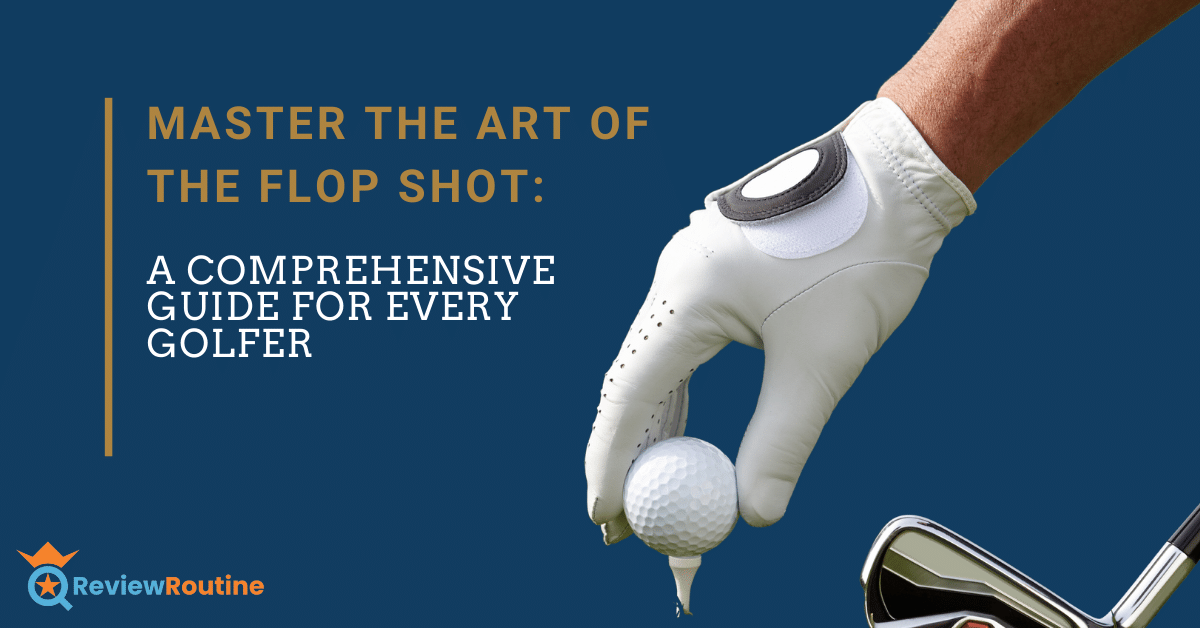
What Is the Difference Between a Flop Shot and a Lob Shot?
The flop shot and the lob shot are two distinct techniques in golf, each with its specific purpose and application in a golfer's arsenal. While both shots aim to achieve a high trajectory and a soft landing, the key differences lie in their execution and the situations in which they are best employed.
Flop Shot
A flop shot is designed to generate maximum height and a steep trajectory in a very short distance. It is typically used when a golfer faces an obstacle, such as a bunker or water hazard, with very little green to work with between the barrier and the hole. The primary goal of a flop shot is to have the ball lands softly on the green with minimal roll, allowing for greater control and accuracy.
To execute a flop shot, a golfer uses a high-lofted club (usually a 60-degree or 64-degree lob wedge) and opens the clubface, increasing the loft. The golfer also adopts a more open stance and swings along the body line rather than toward the target. This technique requires a delicate touch and much practice to master.
Lob Shot
A lob shot, on the other hand, is a versatile, high-trajectory shot that can cover a longer distance than a flop shot. It is generally used when an average golfer has more green to work with and needs the ball to stop quickly upon landing. The lob shot is often employed to approach a raised green or clear moderate obstacles while maintaining control over the ball's roll.
To perform a lob shot, a golfer typically uses a 56-degree or 60-degree wedge and maintains a square or slightly open clubface. The swing is more of a traditional pitch shot swing, focusing on maintaining control and generating spin to stop the ball quickly upon landing.
In summary, the main difference between a flop shot and a lob shot lies in their execution and the specific situations in which they are used. A flop shot is best for clearing obstacles with minimal green, while a lob shot provides more versatility in distance and control for situations with more green available. Mastering both shots can significantly enhance a golfer's short game and overall performance on the course.

How Does a Flop Shot Differ From a Chip Shot?
A flop shot and a chip shot are two distinct golf techniques, each with its specific purpose and application in a golfer's short game. While both shots are used for shots around the green, the key differences lie in their trajectory, distance, and execution.
Flop Shot
As previously mentioned, a flop shot is a high-lofted shot designed to generate maximum height and a steep trajectory in a very short distance. It is used when a golfer needs to clear an obstacle, such as a bunker or water hazard, with very little green to work with. The primary goal is to have the ball land softly on the green with minimal roll, allowing for greater control and accuracy. A flop shot is executed with a high-lofted club (usually a 60-degree or 64-degree lob wedge), an open clubface, and an open stance.
Chip Shot
On the other hand, a chip shot is a low-trajectory shot played from around the green, aiming to get the ball rolling on the ground as soon as possible. The primary goal of a chip shot is to achieve accuracy and control, allowing the ball to roll toward the hole while minimizing the risk of flying over the green. Depending on the desired trajectory and roll, a chip shot is typically executed with a less-lofted club, such as a 7-iron, 8-iron, or 9-iron.
The main differences between a flop shot and a chip shot are:
- Trajectory: A flop shot has a high, steep trajectory, while a chip shot has a low, running trajectory.
- Distance: A flop shot covers a shorter distance with minimal roll, while a chip shot focuses on a controlled roll to cover a longer distance.
- Execution: A flop shot requires an open clubface and stance, whereas a chip shot uses a square or slightly open clubface and a more neutral stance.
- Club selection: A flop shot is executed with a high-lofted club (lob wedge), while a chip shot is performed with a less-lofted club (usually an iron).
A flop shot is best used when obstacles need to be cleared and there is minimal green to work with. On the other hand, a chip shot is used when there is greener available, and the golfer wants to achieve accuracy and control by getting the ball rolling towards the hole.
Understanding when to use each shot and mastering their respective techniques can significantly improve a golfer's short game and overall performance on the course.
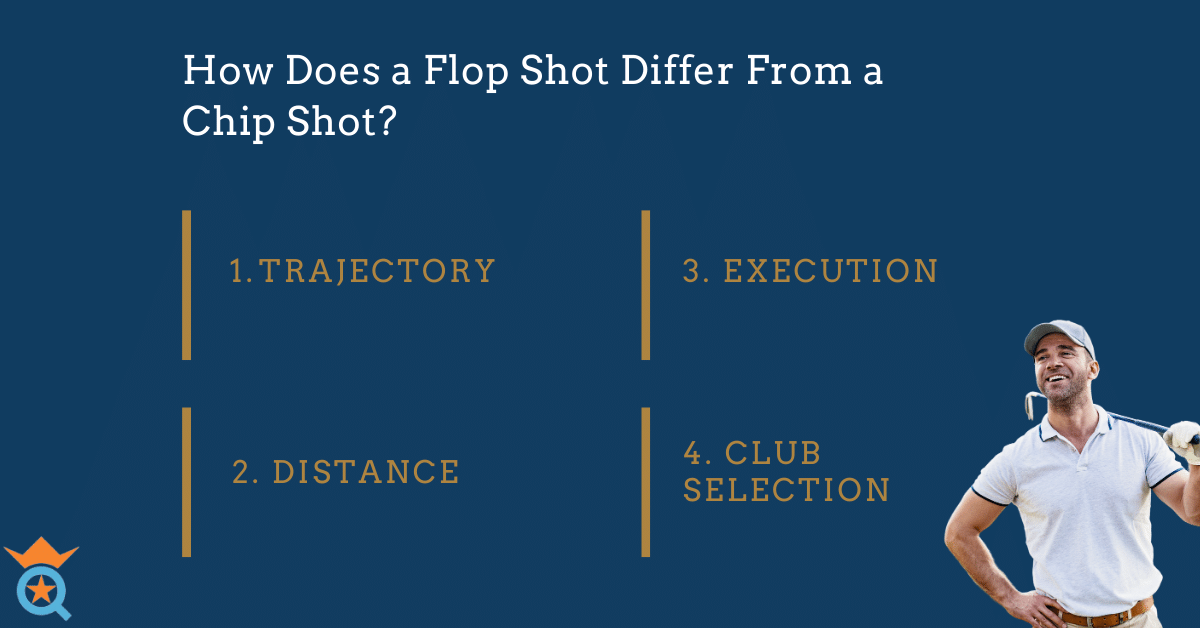
What Club Should You Use for a Flop Shot?
To execute a successful flop shot, selecting the right club is crucial. The ideal clubs for hitting flops are high-lofted wedges that provide the necessary loft and bounce to achieve the desired trajectory and soft landing.
Some of the best options include:
- Lob Wedges: A lob wedge, typically with a loft between 58 and 64 degrees, is the most commonly used club for flop shots. The high loft allows the golfer to generate the required height and steep trajectory for a successful flop shot.
- Sand Wedges: Although less common, a sand wedge with a loft between 54 and 58 degrees can also be used to hit a flop shot, especially when a lob wedge is unavailable. However, the golfer may need to open the clubface more to achieve the desired trajectory.
Recommended clubs for flop shots:
- Titleist Vokey Wedge: Known for its exceptional performance and versatility, the Titleist Vokey Wedge offers various loft and bounces options, making it an excellent choice for hitting flop shots.
- Callaway Mack Daddy Wedge: Designed with input from tour professionals, the Callaway Mack Daddy Wedge provides optimal spin, control, and turf interaction, making it another excellent option for executing flop shots.
In summary, high-lofted wedges, such as lob wedges and sand wedges, are the ideal clubs for hitting flop shots. Top choices like the Titleist Vokey Wedge and Callaway Mack Daddy Wedge offer exceptional performance, control, and versatility to help golfers master this challenging yet rewarding shot.

How Do You Set up a Flop Shot?
Setting up correctly for a flop shot is crucial to its success. The proper setup ensures the golfer can generate the required height and trajectory while maintaining control and accuracy.
Here's how to set up for a flop shot:
- Ball Position: Position the ball just forward of the middle of your stance, approximately a couple of inches towards your front foot. This placement allows for a better angle of attack and helps generate the necessary loft.
- Stance: Adopt an open stance, with your feet, hips, and shoulders aligned slightly left of the target for right-handed golfers (or right of the target for left-handed golfers). This setup promotes an outside-to-inside swing path, which helps to create the desired high trajectory.
- Clubface Angle: Turn the clubface open, pointing away from the target, to increase the club's loft. Ensure the clubface remains open throughout the swing to maintain the added loft and generate the required height and steep trajectory.
- Weight Distribution: Depending on the ball's lie, adjust your weight distribution to promote clean contact and optimal ball flight.
- Tight Lie: If the ball is on a tight lie (e.g., fairway or closely mown area), shift more weight onto your front leg (approximately 60% to 70%). This weight distribution encourages a steeper angle of attack, which helps achieve a clean contact and generates more spin.
- Rough Lie: Keep your weight evenly distributed between your legs if the ball is rough. This setup promotes a shallower swing path, preventing the club from sliding under the ball without proper contact. However, be aware that you may generate less spin from a rough lie due to the grass interfering with clean contact.
Proper setup for a flop shot involves:
- Positioning the ball forward in your stance.
- Adopting an open stance.
- Turning the clubface open to increase loft.
- Adjusting your weight distribution based on the ball's lie.
Following these guidelines will help you achieve the desired high and soft trajectory, allowing you to execute a flop shot in various situations successfully.

How Do You Hit a Flop Shot With a Sand Wedge?
Hitting a flop shot with a sand wedge may seem challenging, but you can still execute it by making a few adjustments to your technique. Here are the key points to focus on when using a sand wedge for a flop shot:
- Increase the openness of the clubface: Since a sand wedge has less loft than a lob wedge, compensate by opening the clubface more. This will help you achieve the necessary height and trajectory for the shot.
- Maintain the standard flop shot ball position and stance: Keep the ball just forward of the middle of your stance and adopt an open stance. This promotes an outside-to-inside swing path, which is crucial for the high trajectory of a flop shot.
- Exaggerate the outside-to-inside swing path: With a sand wedge, you may need to emphasize the outside-to-inside swing path more than a lob wedge to generate the required height and steep trajectory.
- Adjust your weight distribution according to the lie: For tight lies, shift more weight onto your front leg while keeping your weight evenly distributed between your legs if the ball is rough.
- Take a slightly longer and faster swing: To compensate for the lower loft of the sand wedge, you may need to increase your swing speed and length to achieve the desired height and distance.
- Commit to the shot: Trust your technique and stay confident throughout the swing. Visualize a successful outcome and focus on executing the shot.
By applying these adjustments when using a sand wedge for a flop shot, you can overcome the challenges of the lower loft and achieve the desired trajectory and outcome. Practice these techniques to build confidence and improve your short-game versatility.
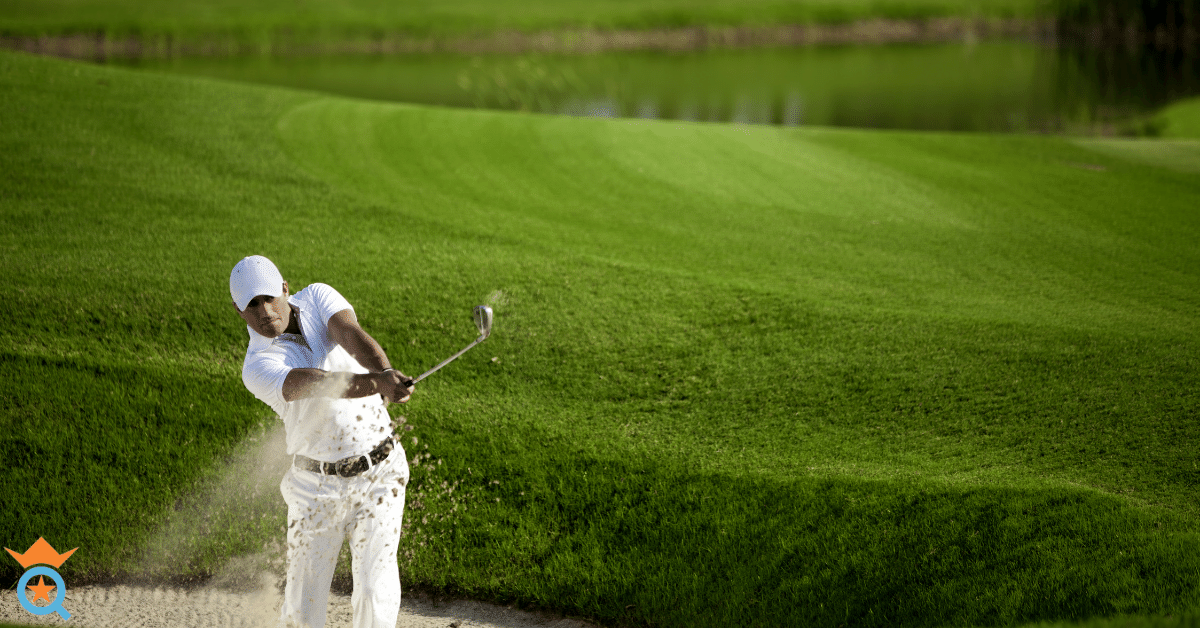
How Do You Hit a Short Flop Shot?
Hitting a short flop shot requires a few modifications to the standard flop shot technique. These adjustments will help you control the distance while maintaining a flop shot's high trajectory and soft landing characteristics.
Here are some tips for executing a short flop shot:
- Choke down on the grip: Grip down on the club an inch or two to shorten the length. This adjustment will give you better control and feel for the shorter-distance shot.
- Narrow your stance: Bring your feet closer together, which will help limit the swing length and, in turn, control the shot's distance.
- Lessen your backswing: Shorten your backswing to about half or three-quarters of your standard swing length. This will reduce the power generated, making controlling the shot's distance easier.
- Maintain the open clubface: Keep the clubface open to ensure you achieve the height and trajectory for the flop shot, even with the shorter distance.
- Soft hands and smooth tempo: Focus on maintaining soft hands and a smooth tempo throughout the swing. This will help you control the distance and achieve a delicate touch on the shot.
- Accelerate through impact: Despite the shorter distance, it's crucial to maintain acceleration through impact to ensure clean contact and generate the desired spin for a soft landing.
- Practice and feel: Spend time on the practice green, working on short flop shots to develop a feel for the shot and the appropriate adjustments required. This will help you build confidence and consistency in your technique.
To hit a short flop shot, choke down on the grip, narrow your stance, shorten your backswing, maintain the open clubface, keep soft hands and a smooth tempo, accelerate through impact, and practice to develop a feel for the shot. These adjustments will help you control the distance while maintaining a flop shot's high trajectory and soft landing.

Flop Shot vs. Pitch Shot
A flop shot and a pitch shot are both essential parts of a golfer's short-game arsenal, but they serve different purposes and require other techniques. Understanding when and how to use each shot will help improve your overall short game.
Flop Shot
A flop shot is a high, soft shot that produces minimal roll upon landing. It is primarily used when a golfer needs to clear an obstacle, such as a bunker, or when there is very little green between the golfer and the hole. The main goal is to achieve a steep trajectory, a soft landing, and minimal roll.
Key characteristics of a flop shot include:
- High trajectory and steep landing angle
- Open clubface and open stance
- Minimal roll after landing
- Requires confidence and commitment to the shot
- Best used when facing obstacles or short-sided situations
Pitch Shot
A pitch shot is versatile in various situations around the green. It typically has a medium to high trajectory and is designed to fly most of the distance in the air while allowing for some roll upon landing. Pitch shots are commonly used when a golfer has more green to work with or when playing from longer distances around the green.
Key characteristics of a pitch shot include:
- Medium to high trajectory and moderate landing angle
- Square or slightly open clubface and stance
- Controlled roll after landing
- It can be used in various situations around the green
- Requires accuracy and distance control
In summary, a flop shot is a high, soft shot with minimal roll to clear obstacles or when facing short-sided situations. A pitch shot has a medium to high trajectory and allows for some roll upon landing, making it a versatile option for various positions around the green. Knowing when to use each shot and mastering their techniques will significantly enhance your short game and overall scoring potential.

How Can Rick Shiels' Advice Improve Your Flop Shot?
Rick Shiels is a well-known golf instructor and YouTube personality who offers valuable advice for golfers looking to improve their game. By following his insights and tips, you can enhance your flop shot technique and achieve better results on the course.
Some of Rick Shiels' critical tips for hitting a flop shot include:
- Confidence and commitment: Committing to the shot is crucial for success. Believe in your ability to execute the flop shot, and don't hesitate during the swing. Trust your technique and visualize a positive outcome.
- Maintain loft through impact: To ensure maximum loft and a high trajectory, keep the clubface open throughout the swing, even after crash. This will help achieve the desired height and soft landing.
- Swing along your body line: Since your stance is open, swing along the line of your body instead of swinging directly at the target. The open clubface will naturally send the ball toward the target without the need to force it.
- Accelerate through impact: Maintain a smooth, accelerating swing through impact. Decelerating or slowing down can result in mishits or poor contact, leading to undesirable outcomes.
- Strong wrists: Avoid letting your wrists "flip" or break upwards through impact. Keep your wrists firm to ensure clean contact and better control of the ball's trajectory and spin.
- Practice: To truly master the flop shot, spend time practicing on the range and in various course situations. Experiment with different lies and distances to gain confidence and develop a feel for the shot.
Following Rick Shiels' advice and incorporating these tips into your practice routine can improve your flop shot technique, increase your confidence, and ultimately enhance your overall short-game performance.
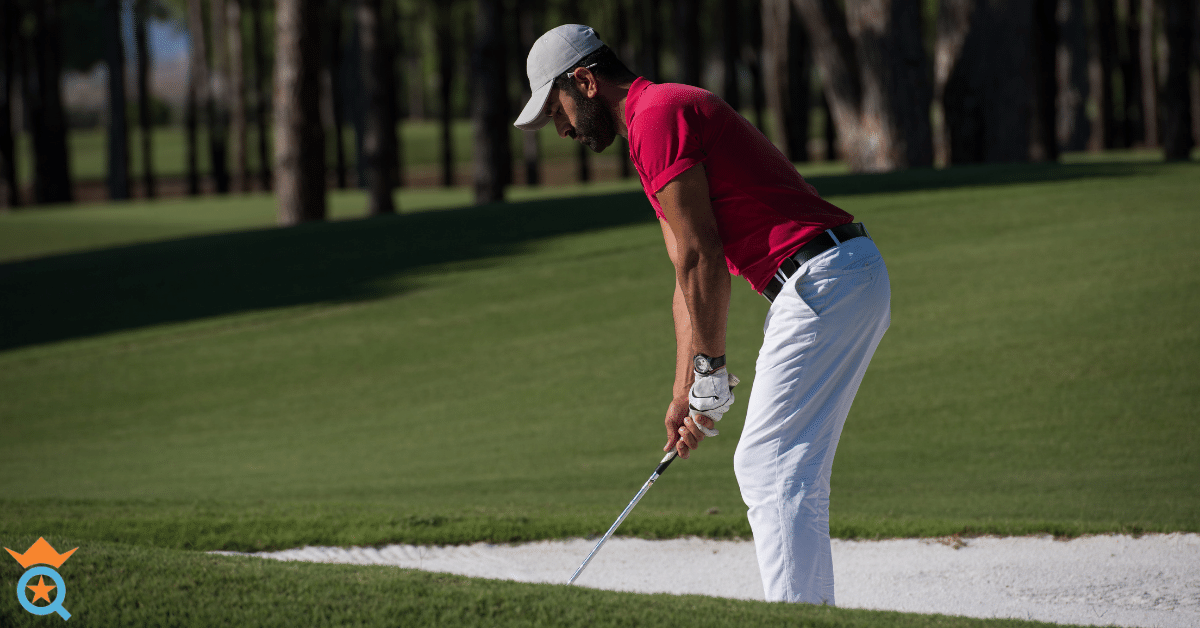
How Can You Practice and Perfect Your Flop Shot Technique?
Practicing and perfecting your flop shot technique is essential for building confidence and skill in executing this challenging shot. Here are some practice tips and drills to help you improve your flop shot:
- Start with the basics: Focus on the fundamental elements of the flop shot, such as setup, stance, clubface angle, and swing path. Begin by practicing these aspects individually to build a strong foundation for your technique.
- Varied lies: Practice hitting flop shots from various lies, such as tight lies, fluffy rough, and uphill or downhill lies. This will help you adapt your technique to different course conditions and build confidence in handling various situations.
- Distance control: Set up targets at different distances around the green and practice landing your flop shots as close to the targets as possible. This will help you develop better distance control and touch.
- Trajectory control: Experiment with different swing lengths and clubface angles to learn how to control the trajectory of your flop shots. Depending on the situation, this will enable you to hit higher or lower shots.
- One-handed drill: Practice hitting flop shots using only your trail hand (right hand for right-handed golfers). This drill promotes a smooth, accelerating swing and helps you maintain the clubface angle throughout the swing.
- Towel or headcover drill: Place a towel or headcover a few inches behind your ball, simulating a potential obstacle. The goal is to hit the flop shot without touching the towel or headcover, encouraging you to make clean contact and avoid hitting too far behind the ball.
- Flop shot over an obstacle: Set up a small obstacle, such as a bag or a bucket, a few feet before your ball. Practice hitting flop shots over the obstacle, focusing on achieving a high trajectory and a soft landing.
- Pressure situations: Create pressure situations during practice by challenging yourself to get up and down from different locations around the green. This will help you develop the mental toughness needed to execute flop shots in high-pressure situations on the course.
- Feedback and adjustments: Use video analysis or work with a coach to receive feedback on your technique. This will help you identify areas for improvement and make necessary adjustments to your swing.
- Consistent practice: Dedicate time to practicing your flop shot regularly, making it a regular part of your routine. The more you practice, the more confident and skilled you will become in executing this challenging shot.
By incorporating these practice tips and drills into your routine, you'll develop the confidence, skill, and adaptability needed to execute flop shots effectively on the course.
In conclusion
Mastering the flop shot is crucial to improving a golfer's short game. This high, soft shot offers a valuable tool for overcoming obstacles and handling short-sided situations on the course. By dedicating time and effort to practice, focusing on the fundamentals, and learning from experts like Rick Shiels, you can develop the confidence and skill to execute flop shots effectively.
As you refine your technique and expand your short-game arsenal, you'll be better equipped to navigate challenging course conditions and elevate your overall golf game.
Growing Popularity of Golf
FAQs
How do you flop a shot?
To hit a flop shot, use a high-lofted wedge, open the clubface, set up with an open stance, and maintain a smooth, accelerating swing. Focus on keeping the clubface open throughout the swing for a high, soft-landing golf shot.
Where do you aim for a flop shot?
Aim slightly left of the target (for right-handed golfers) with your body, while the clubface should be pointed towards the target. Swing along your body line and let the open clubface naturally guide the ball to the target.
Can you hit a flop shot with a 56?
Yes, you can hit a flop shot with a 56-degree wedge, but achieving the desired height and soft landing will be more challenging than using a higher-lofted wedge.
What wedge to use for a flop shot?
A high-lofted wedge, such as a 60-degree lob wedge, is ideal for hitting flop shots. Some golfers may use a 64-degree wedge for even greater height and softer landings.
What is the purpose of a flop shot?
A flop shot aims to hit a high, soft-landing golf shot over obstacles or in situations where there is minimal green to work with, allowing the ball to stop quickly on the green.
Should the flop shot be in front or back of the stance?
For a flop shot, position the golf ball just forward in the middle of your stance (about a couple of inches).
Should a flop shot be a high or low bounce?
A flop shot should have a high bounce, allowing the golf ball to land softly on the green with minimal roll.
What angle do you launch a flop shot?
The launch angle for a flop shot is significantly higher than a standard golf shot, achieved by opening the clubface and maintaining that angle throughout the swing. The specific angle will vary depending on the golfer and the club used.




